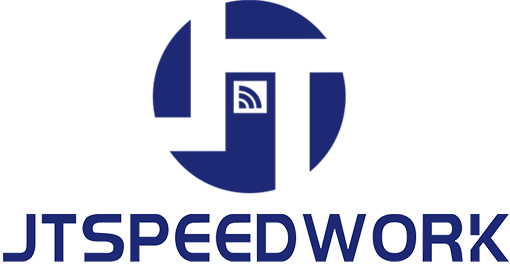а§Ьа•Иа§Єа§Њ а§Ха§њ ৵а•И৴а•Н৵ড়а§Х а§Ха•Га§Ја§њ ১а•За§Ьа•А а§Єа•З а§°а§ња§Ьа§ња§Яа§≤а§Ња§За§Ьа•З৴৮ а§Фа§∞ а§ђа•Б৶а•Н৲ড়ু১а•Н১ৌ а§Ха•А а§Уа§∞ ৵ড়а§Х৪ড়১ а§єа•Л১а•А а§єа•И, ৙৴а•Б৲৮ а§Й৶а•На§ѓа•Ла§Ч а§≠а•А ১а§Х৮а•Аа§Ха•А ৙а§∞ড়৵а§∞а•Н১৮ а§Ха•А а§Па§Х а§≤а§єа§∞ а§Ха§Њ а§Е৮а•Ба§≠৵ а§Ха§∞ а§∞а§єа§Њ а§єа•Иа•§ а§∞а•За§°а§ња§ѓа•Л а§Ђа•На§∞а•Аа§Ха•Н৵а•За§Ва§Єа•А а§Жа§За§°а•За§Ва§Яа§ња§Ђа§ња§Ха•З৴৮ (RFID) ১а§Х৮а•Аа§Х, а§За§Ва§Яа§∞৮а•За§Я а§Са§Ђ ৕ড়а§Ва§Ча•На§Є (IoT) а§Ха§Њ а§Па§Х а§Ѓа•Ба§Ца•На§ѓ а§Ша§Яа§Х, ৙৴а•Б৲৮ а§Ца•З১а•А а§Ха•З а§°а§ња§Ьа§ња§Яа§≤ ৙а§∞ড়৵а§∞а•Н১৮ а§Ха•Л а§Ъа§≤ৌ৮а•З а§Ха•З а§≤а§ња§П а§Па§Х ু৺১а•Н৵৙а•Ва§∞а•На§£ а§Й৙а§Ха§∞а§£ а§Ха•З а§∞а•В৙ а§Ѓа•За§В а§Йа§≠а§∞а§Њ а§єа•Иа•§ а§Е৙৮а•А а§Ха§Ѓ а§≤а§Ња§Ч১, ৶а§Ха•Нৣ১ৌ а§Фа§∞ ৴а§Ха•Н১ড়৴ৌа§≤а•А а§°а•За§Яа§Њ ৙а•На§∞а§Єа§Ва§Єа•На§Ха§∞а§£ а§Ха•Нৣু১ৌа§Уа§В а§Ха•З ৪ৌ৕, RFID ১а§Х৮а•Аа§Х ৙ৌа§∞а§В৙а§∞а§ња§Х ৙৴а•Б৲৮ а§Й১а•Н৙ৌ৶৮ а§Фа§∞ ৙а•На§∞а§ђа§В৲৮ а§Ѓа•За§В а§Ха•На§∞а§Ња§В১ড় а§≤а§Њ а§∞а§єа•А а§єа•И вЧП а§ђа§§а§Ц RFID а§≤а•За§Ч а§ђа•Иа§Ва§° а§Єа•З а§Па§Ха•Аа§Ха•Г১ а§Єа•На§Ѓа§Ња§∞а•На§Я а§Ђа§Ња§∞а•На§Ѓа§ња§Ва§Ч а§Єа§ња§Єа•На§Яа§Ѓ ১а§Ха•§
RFID а§Єа•Н৵а§Ъа§Ња§≤ড়১ а§∞а•В৙ а§Єа•З а§°а•За§Яа§Њ а§Ха•Л ৙৺а§Ъৌ৮৮а•З а§Фа§∞ а§Па§Х১а•На§∞ а§Ха§∞৮а•З а§Ха•З а§≤а§ња§П ৵ৌৃа§∞а§≤а•За§Є а§∞а•За§°а§ња§ѓа•Л а§Єа§ња§Ча•Н৮а§≤ а§Ха§Њ а§Й৙ৃа•Ла§Ч а§Ха§∞а§Ха•З а§Ха§Ња§Ѓ а§Ха§∞১ৌ а§єа•Иа•§ а§За§Єа§Ха•З а§Ѓа•Ба§Ца•На§ѓ а§Ша§Яа§Ха•Ла§В а§Ѓа•За§В а§Яа•Иа§Ч, ৙ৌ৆а§Х а§Фа§∞ а§ђа•Иа§Х-а§Па§Ва§° а§Єа§ња§Єа•На§Яа§Ѓ ৴ৌুড়а§≤ а§єа•Иа§Ва•§ а§Яа•Иа§Ч а§Са§ђа•На§Ьа•За§Ха•На§Яа•На§Є а§Ха•Л а§≤а§Ха•Нৣড়১ а§Ха§∞৮а•З а§Ха•З а§≤а§ња§П а§Єа§Ва§≤а§Ча•Н৮ а§єа•Иа§В а§Фа§∞ а§Ьৌ৮а§Ха§Ња§∞а•А а§Єа§Ва§Ча•На§∞а§єа•А১ а§Ха§∞৮а•З а§Ха•З а§≤а§ња§П а§Па§Х а§Ъড়৙ а§Фа§∞ а§Па§Ва§Яа•А৮ৌ а§єа•Иа§Ва•§ ৙ৌ৆а§Ха•Ла§В а§°а•За§Яа§Њ ৙৥৊৮а•З а§ѓа§Њ а§≤а§ња§Ц৮а•З а§Ха•З а§≤а§ња§П а§Яа•Иа§Ч а§Ха•З ৪ৌ৕ а§Єа§В৵ৌ৶ а§Ха§∞а•За§Ва•§ а§Еа§В১১а§Г а§ђа•Иа§Х-а§Па§Ва§° а§Єа§ња§Єа•На§Яа§Ѓ а§Па§Х১а•На§∞ а§Ха§ња§П а§Ча§П а§°а•За§Яа§Њ а§Ха•Л ৙а•На§∞а§Ха•На§∞а§ња§ѓа§Њ а§Фа§∞ а§Єа§Ва§Ча•На§∞а§єа•А১ а§Ха§∞а•За§Ва•§ ৙৴а•Б৲৮ а§Ца•З১а•А а§Ѓа•За§В, ৮ড়ৣа•На§Ха•На§∞а§ња§ѓ а§Жа§∞а§Па§Ђа§Жа§Иа§°а•А а§Яа•Иа§Ч а§Ха§Њ а§Й৙ৃа•Ла§Ч а§Й৮а§Ха•А а§Ха§Ѓ а§≤а§Ња§Ч১ а§Фа§∞ а§≤а§Ва§ђа•З а§Єа§Ѓа§ѓ ১а§Х а§Ьа•А৵৮а§Ха§Ња§≤ а§Ха•З а§Ха§Ња§∞а§£ а§Ха§ња§ѓа§Њ а§Ьৌ১ৌ а§єа•И, а§Ьа§ња§Єа§Єа•З ৵а•З ৙৴а•Б ৙৺а§Ъৌ৮ а§Фа§∞ а§°а•За§Яа§Њ а§∞а§ња§Ха•Йа§∞а•На§°а§ња§Ва§Ч а§Ха•З а§≤а§ња§П а§Ж৶а§∞а•Н৴ ৐৮ а§Ьৌ১а•З а§єа•Иа§Ва•§
৵а•Нৃৌ৵৺ৌа§∞а§ња§Х а§Е৮а•Б৙а•На§∞а§ѓа•Ла§Ча•Ла§В а§Ѓа•За§В, RFID ১а§Х৮а•Аа§Х а§Ха•Л ৙৴а•Б৲৮ а§Ца•З১а•А а§Ха•З а§Ха§И а§Ха•На§Ја•З১а•На§∞а•Ла§В а§Ѓа•За§В а§Па§Ха•Аа§Ха•Г১ а§Ха§ња§ѓа§Њ а§Ча§ѓа§Њ а§єа•Иа•§ ৙৺а§≤а•З, а§Ѓа•За§В ৵а•На§ѓа§Ха•Н১ড়а§Ч১ ৙৺а§Ъৌ৮ а§Фа§∞ а§Яа•На§∞а•Иа§Ха§ња§Ва§Ч, ৙а•На§∞১а•На§ѓа•За§Х а§Ьৌ৮৵а§∞ ৙а§∞ а§Єа•Ба§Єа§Ьа•На§Ьড়১ RFID а§≤а•За§Ч а§ђа•Иа§Ва§° а§ѓа§Њ ৵ড়а§Ва§Ч а§Яа•Иа§Ч а§Хড়৪ৌ৮а•Ла§В а§Ха•Л а§Е৙৮а•З ৙৴а•Б৲৮ а§Ха•Л ৆а•Аа§Х а§Єа•З ৙৺а§Ъৌ৮৮а•З а§Фа§∞ а§Й৮а§Ха•А ৮ড়а§Ча§∞ৌ৮а•А а§Ха§∞৮а•З а§Ха•А а§Е৮а•Бু১ড় ৶а•З১а•З а§єа•Иа§Ва•§ а§Й৶ৌ৺а§∞а§£ а§Ха•З а§≤а§ња§П, а§°а§Х а§Жа§∞а§Па§Ђа§Жа§Иа§°а•А а§≤а•За§Ч а§ђа•Иа§Ва§° а§Ѓа•За§В ৵ড়а§Ха§Ња§Є а§Ъа§Ха•На§∞а•Ла§В, а§Яа•Аа§Ха§Ња§Ха§∞а§£ а§∞а§ња§Ха•Йа§∞а•На§° а§Фа§∞ а§Єа•Н৵ৌ৪а•Н৕а•На§ѓ а§Ха•А а§Єа•Н৕ড়১ড় а§Єа•З а§Ьа•Ба§°а§Ља•А а§Па§Х а§Е৶а•Н৵ড়১а•Аа§ѓ ৙৺а§Ъৌ৮ а§Єа§Ва§Ца•На§ѓа§Њ а§єа•Л১а•А а§єа•Иа•§ а§∞а§£а§®а•А১ড়а§Х а§∞а•В৙ а§Єа•З а§∞а§Ца•З а§Ча§П RFID ৙ৌ৆а§Ха•Ла§В а§Ха•З ৪ৌ৕, а§Хড়৪ৌ৮ ৵ৌ৪а•Н১৵ড়а§Х а§Єа§Ѓа§ѓ а§Ѓа•За§В а§Ьৌ৮৵а§∞а•Ла§В а§Ха•З а§Єа•Н৕ৌ৮, а§Ч১ড়৵ড়৲ড় а§Фа§∞ а§Ха§≤а•На§ѓа§Ња§£ а§Ха•Л а§Яа•На§∞а•Иа§Х а§Ха§∞ а§Єа§Х১а•З а§єа•Иа§Ва•§ а§Ха•З а§Е৮а•Ба§Єа§Ња§∞ а§Єа•Н৵ৌ৪а•Н৕а•На§ѓ ৮ড়а§Ча§∞ৌ৮а•А а§Фа§∞ а§∞а•Ла§Ч ৮ড়৵ৌа§∞а§£, ১ৌ৙ুৌ৮ а§Єа•За§Ва§Єа§∞ а§Ха•З ৪ৌ৕ а§Па§Ха•Аа§Ха•Г১ а§Жа§∞а§Па§Ђа§Жа§Иа§°а•А а§Яа•Иа§Ч а§Па§Х а§Ьৌ৮৵а§∞ а§Ха•З ৴а§∞а•Аа§∞ а§Ха•З ১ৌ৙ুৌ৮ а§Ха•Л ুৌ৙ а§Єа§Х১а•З а§єа•Иа§Ва•§ ৃ৶ড় а§Е৪ৌুৌ৮а•На§ѓ ১ৌ৙ুৌ৮ а§∞а•Аа§°а§ња§Ва§Ч а§Ха§Њ ৙১ৌ а§≤а§Ча§Ња§ѓа§Њ а§Ьৌ১ৌ а§єа•И, ১а•Л а§Єа§ња§Єа•На§Яа§Ѓ а§Па§Х а§Еа§≤а§∞а•На§Я а§Ха•Л а§Яа•На§∞а§ња§Ча§∞ а§Ха§∞а•За§Ча§Њ, а§Ьа§ња§Єа§Єа•З а§Хড়৪ৌ৮а•Ла§В а§Ха•Л ১а•За§Ьа•А а§Єа•З ৮ড়৵ৌа§∞а§Х а§Й৙ৌৃ а§Ха§∞৮а•З а§Фа§∞ а§ђа•Аа§Ѓа§Ња§∞а•А а§Ха•З ৙а•На§∞а§Єа§Ња§∞ а§Ха•Л а§Ха§Ѓ а§Ха§∞৮а•З а§Ха•А а§Е৮а•Бু১ড় а§Ѓа§ња§≤১а•А а§єа•Иа•§
RFID а§≠а•А а§Па§Х а§≠а•Ва§Ѓа§ња§Ха§Њ ৮ড়а§≠ৌ১ৌ а§єа•И а§Ъа§Ња§∞а§Њ а§Фа§∞ ৙а§∞а•Нৃৌ৵а§∞а§£ ৙а•На§∞а§ђа§Ва§Іа§®а•§ ৙а•На§∞১а•На§ѓа•За§Х а§Ьৌ৮৵а§∞ а§Ха•З а§≤а§ња§П а§Ђа•Аа§°а§ња§Ва§Ч а§єа§ња§Єа•На§Яа§∞а•А а§Фа§∞ а§Єа•Н৵ৌ৪а•Н৕а•На§ѓ а§°а•За§Яа§Њ а§Ха•А а§∞а§ња§Ха•Йа§∞а•На§°а§ња§Ва§Ч а§Ха§∞а§Ха•З, а§Єа•На§Ѓа§Ња§∞а•На§Я а§Ђа•Аа§°а§ња§Ва§Ч а§Єа§ња§Єа•На§Яа§Ѓ а§Єа§Яа•Аа§Х а§Фа§∞ а§Е৮а•Ба§Ха•Ва§≤ড়১ а§Ђа•Аа§°а§ња§Ва§Ч ৙а•На§≤ৌ৮ ৙а•На§∞৶ৌ৮ а§Ха§∞ а§Єа§Х১а•З а§єа•Иа§Ва•§ а§ѓа§є а§Ђа§Ља•Аа§° а§Ха§Ъа§∞а•З а§Ха•Л а§Ха§Ѓ а§Ха§∞১ৌ а§єа•И, ৶а§Ха•Нৣ১ৌ а§Ха•Л ৐৥৊ৌ১ৌ а§єа•И, а§Фа§∞ а§Єа•Н৵৪а•Н৕ ৙৴а•Б ৵ড়а§Ха§Ња§Є а§Ха•Л ৐৥৊ৌ৵ৌ ৶а•З১ৌ а§єа•Иа•§ а§За§Єа§Ха•З а§Еа§≤ৌ৵ৌ, ৙а§∞а•Нৃৌ৵а§∞а§£ а§Єа•За§Ва§Єа§∞ а§Ха•З ৪ৌ৕ а§Па§Ха•Аа§Ха•Г১ а§Жа§∞а§Па§Ђа§Жа§Иа§°а•А а§Єа§ња§Єа•На§Яа§Ѓ ১ৌ৙ুৌ৮, а§Жа§∞а•Н৶а•На§∞১ৌ а§Фа§∞ ৵ৌৃа•Б а§Ча•Ба§£а§µа§§а•Н১ৌ а§Ха•А ৮ড়а§Ча§∞ৌ৮а•А а§Ха§∞ а§Єа§Х১а•З а§єа•Иа§В, а§ѓа§є а§Єа•Б৮ড়৴а•На§Ъড়১ а§Ха§∞১а•З а§єа•Ба§П а§Ха§њ ৙৴а•Б৲৮ а§Ха•А а§∞৺৮а•З а§Ха•А а§Єа•Н৕ড়১ড় а§За§Ја•На§Я১ু ৐৮а•А а§єа•Ба§И а§єа•Иа•§ а§За§Єа§Ха•З а§Е১ড়а§∞а§ња§Ха•Н১, а§Ѓа•За§В а§∞৪৶ а§Фа§∞ а§Ж৙а•Ва§∞а•Н১ড় ৴а•На§∞а•Га§Ва§Ца§≤а§Њ ৙а•На§∞а§ђа§В৲৮, RFID а§Яа•Иа§Ча•На§Є ৙а•Ва§∞а•З а§Ж৙а•Ва§∞а•Н১ড় ৴а•На§∞а•Га§Ва§Ца§≤а§Њ а§Ѓа•За§В а§Й১а•Н৙ৌ৶৮, ৙а§∞ড়৵৺৮ а§Фа§∞ а§ђа§ња§Ха•На§∞а•А а§°а•За§Яа§Њ а§∞а§ња§Ха•Йа§∞а•На§° а§Ха§∞১ৌ а§єа•Иа•§ а§ѓа§є а§Цৌ৶а•На§ѓ а§Яа•На§∞а•За§Єа§ђа§ња§≤а§ња§Яа•А а§Ѓа•За§В а§Ха§Ња§Ђа•А а§Єа•Ба§Іа§Ња§∞ а§Ха§∞১ৌ а§єа•И, а§Єа•Ба§∞а§Ха•На§Ја§Њ а§Єа•Б৮ড়৴а•На§Ъড়১ а§Ха§∞১ৌ а§єа•И а§Фа§∞ а§Й৙а§≠а•Ла§Ха•Н১ৌ а§Яа•На§∞а§Єа•На§Я а§Ха•Л ৐৥৊ৌ১ৌ а§єа•Иа•§
а§Й৶ৌ৺а§∞а§£ а§Ха•З а§≤а§ња§П, а§Па§Х а§Жа§Іа•Б৮ড়а§Х ৐১а§Ц а§Ца•З১ а§Ѓа•За§В, RFID ১а§Х৮а•Аа§Х а§Ха§Њ а§Й৙ৃа•Ла§Ч а§ђа•Б৶а•Н৲ড়ুৌ৮ ৙а•На§∞а§ђа§В৲৮ а§Ха•Л ৙а•На§∞ৌ৙а•Н১ а§Ха§∞৮а•З а§Ха•З а§≤а§ња§П а§Ха§ња§ѓа§Њ а§Ьৌ১ৌ а§єа•Иа•§ а§єа•Иа§Ъа§ња§Ва§Ч а§Ъа§∞а§£ а§Єа•З, ৙а•На§∞১а•На§ѓа•За§Х ৐১а§Ц а§Па§Х RFID а§≤а•За§Ч а§ђа•Иа§Ва§° а§Єа•З а§Єа•Ба§Єа§Ьа•На§Ьড়১ а§єа•И а§Ьа•Л а§Е৙৮а•А а§Е৶а•Н৵ড়১а•Аа§ѓ ৙৺а§Ъৌ৮ а§Ха•Л а§∞а§ња§Ха•Йа§∞а•На§° а§Ха§∞১ৌ а§єа•И а§Фа§∞ а§ђа•Иа§Х-а§Па§Ва§° а§Єа§ња§Єа•На§Яа§Ѓ а§Ха•З ৪ৌ৕ а§Єа§ња§Ва§Ха•На§∞৮ৌа§За§Ьа§Љ а§Ха§∞১ৌ а§єа•Иа•§ а§°а§Х ৴а•За§° а§Ѓа•За§В а§Єа•Н৕ৌ৙ড়১ а§Єа•Н৵а§Ъа§Ња§≤ড়১ ৙ৌ৆а§Х ৶а•И৮ড়а§Х а§Жа§В৶а•Ла§≤৮ а§Фа§∞ ৵а•Нৃ৵৺ৌа§∞ ৙а•Иа§Яа§∞а•Н৮ а§∞а§ња§Ха•Йа§∞а•На§° а§Ха§∞১а•З а§єа•Иа§Ва•§ ৃ৶ড় а§Па§Х ৐১а§Ц вЧП а§Па§Є а§Ч১ড়৵ড়৲ড় а§Е৪ৌুৌ৮а•На§ѓ а§∞а•В৙ а§Єа•З а§Ха§Ѓ а§єа•Л а§Ьৌ১а•А а§єа•И, ১а•Л ৙а•На§∞а§£а§Ња§≤а•А а§Е৙৮а•З а§Єа•Н৵ৌ৪а•Н৕а•На§ѓ а§Ха§Њ ৮ড়а§∞а•Аа§Ха•На§Ја§£ а§Ха§∞৮а•З а§Ха•З а§≤а§ња§П а§Ха•Га§Ја§њ а§Ха§∞а•На§Ѓа§Ъа§Ња§∞а§ња§ѓа•Ла§В а§Ха•Л а§Єа•Ва§Ъড়১ а§Ха§∞১а•А а§єа•Иа•§ а§Па§Х а§Єа§Яа•Аа§Х а§Ђа•Аа§°а§ња§Ва§Ч а§Єа§ња§Єа•На§Яа§Ѓ а§Ха§Њ а§Й৙ৃа•Ла§Ч а§Ха§∞১а•З а§єа•Ба§П, а§Ца•З১ RFID- а§Па§Х১а•На§∞ড়১ ৵ড়а§Ха§Ња§Є а§°а•За§Яа§Њ а§Ха•З а§Жа§Іа§Ња§∞ ৙а§∞ а§Ђа§Ља•Аа§° ৙а•На§∞а§Ха§Ња§∞ а§Фа§∞ ুৌ১а•На§∞а§Њ а§Ха•Л а§Єа§Ѓа§Ња§ѓа•Ла§Ьড়১ а§Ха§∞১ৌ а§єа•И, а§Ьа•Л ৐১а§Ц вЧП а§µа§ња§Ха§Ња§Є ৶а§∞ а§Ѓа•За§В а§Єа•Ба§Іа§Ња§∞ а§Ха§∞১а•З а§єа•Ба§П а§Ђа§Ља•Аа§° а§Е৙৴ড়ৣа•На§Я а§Ха•Л а§Ха§Ѓ а§Ха§∞১ৌ а§єа•Иа•§ а§Еа§В১ а§Ѓа•За§В, RFID а§Яа•Иа§Ч а§Й১а•Н৙ৌ৶৮ а§Єа•З а§ђа§ња§Ха•На§∞а•А ১а§Х ৙а•Ва§∞а•На§£ а§Яа•На§∞а•За§Єа§ђа§ња§≤а§ња§Яа•А а§Єа•Б৮ড়৴а•На§Ъড়১ а§Ха§∞১а•З а§єа•Иа§В, а§ђа§Ња§Ьа§Ња§∞ а§Ѓа•За§В а§Й১а•Н৙ৌ৶ ৙а•На§∞১ড়৪а•Н৙а§∞а•На§Іа§Њ а§Ха•Л ৐৥৊ৌ১а•З а§єа•Иа§Ва•§
а§За§Єа§Ха•З а§≤а§Ња§≠а•Ла§В а§Ха•З ৐ৌ৵а§Ьа•В৶, ৙৴а•Б৲৮ а§Ца•З১а•А а§Ѓа•За§В RFID ৙а•На§∞а•М৶а•На§ѓа•Ла§Ча§ња§Ха•А а§Ха•Л а§Е৙৮ৌ৮а•З а§Єа•З а§Ха•Ба§Ы а§Ъа•Б৮а•М১ড়ৃа•Ла§В а§Ха§Њ ৪ৌু৮ৌ а§Ха§∞৮ৌ ৙ৰ৊১ৌ а§єа•Иа•§ ৙а•На§∞а§Ња§∞а§Ва§≠а§ња§Х а§≤а§Ња§Ч১ а§Яа•Иа§Ч, ৙ৌ৆а§Х а§Фа§∞ а§ђа•Иа§Х-а§Па§Ва§° а§Єа§ња§Єа•На§Яа§Ѓ а§Ыа•Ла§Яа•З ৙а•Иুৌ৮а•З ৙а§∞ а§Хড়৪ৌ৮а•Ла§В а§Ха•З а§≤а§ња§П а§Па§Х а§ђа§Ња§Іа§Њ а§єа•Л а§Єа§Х১а•З а§єа•Иа§Ва•§ а§За§Єа§Ха•З а§Е১ড়а§∞а§ња§Ха•Н১, RFID а§Й৙а§Ха§∞а§£а•Ла§В а§Ха•Л ৐৮ৌа§П а§∞а§Ц৮а•З а§Фа§∞ а§ђа§°а§Ља•З а§°а•За§Яа§Њ а§Єа•За§Яа•Ла§В а§Ха•Л ৙а•На§∞а§ђа§В৲ড়১ а§Ха§∞৮а•З а§Ха•З а§≤а§ња§П ১а§Х৮а•Аа§Ха•А ৵ড়৴а•За§Ја§Ьа•На§Ю১ৌ а§Ха•А а§Ж৵৴а•На§ѓа§Х১ৌ а§єа•Л১а•А а§єа•И, а§Ьа•Л ৙ৌа§∞а§В৙а§∞а§ња§Х ৙৴а•Б৲৮ а§Хড়৪ৌ৮а•Ла§В а§Ха•З а§≤а§ња§П а§Ъа•Б৮а•М১ড়ৃа•Ла§В а§Ха§Њ ৪ৌু৮ৌ а§Ха§∞১а•А а§єа•Иа•§ а§За§Єа§Ха•З а§Еа§≤ৌ৵ৌ, а§Па§Ха•Аа§Ха•Г১ а§Й৶а•На§ѓа•Ла§Ч ুৌ৮а§Ха•Ла§В а§Ха•А а§Ха§Ѓа•А а§Ха•З ৙а§∞а§ња§£а§Ња§Ѓа§Єа•Н৵а§∞а•В৙ ৵ড়а§≠ড়৮а•Н৮ ৮ড়а§∞а•Нুৌ১ৌа§Уа§В а§Єа•З а§Єа§ња§Єа•На§Яа§Ѓ а§Ха•З а§ђа•Аа§Ъ а§Е৮а•Ба§Ха•Ва§≤১ৌ а§Ха•З а§Ѓа•Б৶а•Н৶а•З а§єа•Л а§Єа§Х১а•З а§єа•Иа§В, а§Єа•На§Ха•За§≤а•За§ђа§ња§≤а§ња§Яа•А а§Ѓа•За§В а§ђа§Ња§Іа§Њ а§Й১а•Н৙৮а•Н৮ а§Ха§∞ а§Єа§Х১а•З а§єа•Иа§Ва•§
а§≠৵ড়ৣа•На§ѓ а§Ха•А а§Уа§∞ ৶а•За§Ц১а•З а§єа•Ба§П, RFID ১а§Х৮а•Аа§Х ১а•За§Ьа•А а§Єа•З а§ђа§°а§Ља•З а§°а•За§Яа§Њ, а§Ха•Г১а•На§∞а§ња§Ѓ а§ђа•Б৶а•Н৲ড়ু১а•Н১ৌ а§Фа§∞ а§ђа•На§≤а•Йа§Ха§Ъа•З৮ а§Ха•З ৪ৌ৕ а§Па§Ха•Аа§Ха•Г১ а§єа•Ла§Ча•А, ৙৴а•Б৲৮ а§Й৶а•На§ѓа•Ла§Ч а§Ха•Л а§Йа§Ъа•На§Ъ а§Єа•Н১а§∞ а§Ха•А а§Ца•Ба§Ђа§ња§ѓа§Њ а§Єа•Н১а§∞ а§Ха•А а§Уа§∞ а§≤а•З а§Ьа§Њ а§∞а§єа•А а§єа•Иа•§ а§ђа§ња§Ч а§°а•За§Яа§Њ а§П৮ৌа§≤а§ња§Яа§ња§Ха•На§Є а§ђа§Ња§Ьа§Ња§∞ а§Ха•А а§Ѓа§Ња§Ва§Ча•Ла§В а§Ха•А а§≠৵ড়ৣа•На§ѓа§µа§Ња§£а•А а§Ха§∞৮а•З а§Фа§∞ а§Й১а•Н৙ৌ৶৮ а§ѓа•Ла§Ь৮ৌа§Уа§В а§Ха§Њ а§Е৮а•Ба§Ха•Ва§≤৮ а§Ха§∞৮а•З а§Ха•З а§≤а§ња§П а§Хড়৪ৌ৮а•Ла§В а§Ха•Л а§Жа§∞а§Па§Ђа§Жа§Иа§°а•А-а§Па§Х১а•На§∞ а§Ьৌ৮а§Ха§Ња§∞а•А а§Ха§Њ а§Й৙ৃа•Ла§Ч а§Ха§∞৮а•З а§Ѓа•За§В а§Єа§Ха•На§Ја§Ѓ а§Ха§∞а•За§Ча§Ња•§ а§Жа§∞а•На§Яড়ীড়৴ড়ৃа§≤ а§За§Ва§Яа•За§≤а§ња§Ьа•За§Ва§Є ৮ড়а§∞а•На§£а§ѓ а§≤а•З৮а•З а§Ха•А ৪৺ৌৃ১ৌ ৙а•На§∞৶ৌ৮ а§Ха§∞ а§Єа§Х১ৌ а§єа•И, а§Ьа•Иа§Єа•З а§Ха§њ а§∞а•Ла§Ч а§Ха•А а§∞а•Ла§Х৕ৌু а§Ха•А а§Єа§ња§Ђа§Ња§∞ড়৴а•За§В а§Фа§∞ а§Е৮а•Ба§Ха•Ва§≤ড়১ а§Ђа•Аа§°а§ња§Ва§Ч а§∞а§£а§®а•А১ড়ৃৌа§Ба•§ а§За§Є а§ђа•Аа§Ъ, а§ђа•На§≤а•Йа§Ха§Ъа•З৮ ৙а•На§∞а•М৶а•На§ѓа•Ла§Ча§ња§Ха•А а§Цৌ৶а•На§ѓ а§Яа•На§∞а•За§Єа§ђа§ња§≤а§ња§Яа•А а§Єа§ња§Єа•На§Яа§Ѓ а§Ха•А ৙ৌа§∞৶а§∞а•Н৴ড়১ৌ а§Фа§∞ а§Єа•Ба§∞а§Ха•На§Ја§Њ а§Ха•Л ৐৥৊ৌа§Па§Ча•А, а§Еа§Іа§ња§Х а§Й৙а§≠а•Ла§Ха•Н১ৌ а§Яа•На§∞а§Єа•На§Я а§Ха§Њ ৮ড়а§∞а•На§Ѓа§Ња§£ а§Ха§∞а•За§Ча•Аа•§
а§Єа§∞а§≤ ৐১а§Ц а§Жа§∞а§Па§Ђа§Жа§Иа§°а•А а§≤а•За§Ч а§ђа•Иа§Ва§° а§Єа•З а§≤а•За§Ха§∞ ৵а•Нৃৌ৙а§Х а§Єа•На§Ѓа§Ња§∞а•На§Я а§Ђа§Ња§∞а•На§Ѓа§ња§Ва§Ч а§Єа•Йа§≤а•На§ѓа•В৴а§Ва§Є ১а§Х, а§Жа§∞а§Па§Ђа§Жа§Иа§°а•А ১а§Х৮а•Аа§Х ৙৺а§≤а•З а§Єа•З а§єа•А ৙৴а•Б৲৮ а§Ца•З১а•А а§Ха•З а§°а§ња§Ьа§ња§Яа§≤а•Аа§Ха§∞а§£ а§Ха•З ৙а•Аа§Ыа•З а§Па§Х ৙а•На§∞а•За§∞а§Х ৴а§Ха•Н১ড় а§єа•Иа•§ а§Ьа§ђа§Ха§њ а§Ъа•Б৮а•М১ড়ৃৌа§В ৐৮а•А а§єа•Ба§И а§єа•Иа§В, а§Й১а•Н৙ৌ৶৮ ৶а§Ха•Нৣ১ৌ а§Ѓа•За§В а§Єа•Ба§Іа§Ња§∞ а§Фа§∞ ৙а•На§∞а§ђа§В৲৮ ৙а•На§∞৕ৌа§Уа§В а§Ха•Л ৐৶а§≤৮а•З ৙а§∞ а§За§Єа§Ха§Њ ৙а•На§∞а§≠ৌ৵ ৮ড়а§∞а•Н৵ড়৵ৌ৶ а§єа•Иа•§ а§Ьа•Иа§Єа•З -а§Ьа•Иа§Єа•З а§≤а§Ња§Ч১ а§Ѓа•За§В а§Ха§Ѓа•А а§Ж১а•А а§∞৺১а•А а§єа•И а§Фа§∞ а§Ж৵а•З৶৮ ৙а§∞ড়৶а•Г৴а•На§ѓа•Ла§В а§Ха§Њ ৵ড়৪а•Н১ৌа§∞ а§єа•Л১ৌ а§єа•И, RFID ৙৴а•Б৲৮ а§Ца•З১а•А а§Ѓа•За§В а§Фа§∞ а§≠а•А а§Еа§Іа§ња§Х а§≠а•Ва§Ѓа§ња§Ха§Њ ৮ড়а§≠а§Ња§Па§Ча§Њ, а§Еа§Іа§ња§Х а§Ха•Б৴а§≤, а§Яа§ња§Ха§Ња§К а§Фа§∞ ৙а§∞а•Нৃৌ৵а§∞а§£ а§Ха•З а§Е৮а•Ба§Ха•Ва§≤ а§≠৵ড়ৣа•На§ѓ а§Ха•З а§≤а§ња§П а§Ѓа§Ња§∞а•На§Ч ৙а•На§∞৴৪а•Н১ а§Ха§∞а•За§Ча§Ња•§
 а§єа§ња§В৶а•Аhi
а§єа§ња§В৶а•Аhi а§За§Є ৙а§∞ а§Ђа•Л৮ а§Ха§∞а•За§В :
+86 18681515767
а§За§Є ৙а§∞ а§Ђа•Л৮ а§Ха§∞а•За§В :
+86 18681515767
 а§Иа§Ѓа•За§≤ :
marketing@jtspeedwork.com
а§Иа§Ѓа•За§≤ :
marketing@jtspeedwork.com

















